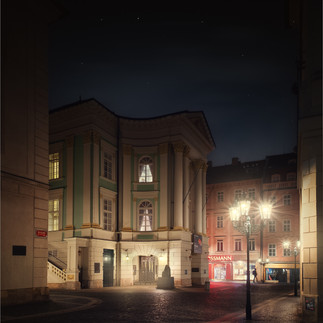Tamron 11-20/2.8 Di III-A RXD na Fuji
- David Vančišin
- Jan 23
- 3 min read
Updated: Jan 24

For the first time in my life, I shot with a zoom lens on a Fuji. And I used it for both nature and city photography. I like Fujifilm cameras and use them pretty much every day, but for a completely different genre of photography. I use them to capture life – I document photos for myself and enjoy the everyday joy of shooting with them. And for city or landscape photography, I almost always take my Sony. So I thought I’d try something different and borrowed the Tamron 11-20mm f/2.8 Di III-A RXD wide-angle zoom from Tamron. This won’t be a highly technical review, but more of my personal opinion, so please don’t expect an explanation of every letter in the name. 😀

It’s a small, lightweight lens that, despite being plastic, doesn’t feel cheap. Thanks to that, it weighs only 335 g, which is nothing, so even on small bodies like my X-E3, which I used for shooting, it doesn’t feel out of place, and the setup remains well-balanced. The lens doesn’t have built-in stabilization, which is a bit of a shame, but on the other hand, it would impact both the size and the price. However, one great feature is that it’s weather-sealed, which means you don’t have to worry about every little drop of water, making shooting much more enjoyable.

At its widest aperture, the lens is a bit soft, and the corners aren’t perfectly sharp, but of course, this improves when stopping down. If I’m shooting at f/2.8, I usually expect to have a blurred foreground or background, which this wide-angle lens can achieve, so slightly soft corners don’t really matter. It also wouldn’t be an issue for reportage. It might be problematic for astrophotography, but this lens isn’t designed for that.
In my usual shooting, I almost always stay between f/8 and f/11 (on my cameras and lenses), and at these apertures, most optical shortcomings disappear – and this lens is no exception. Overall sharpness and contrast start improving from f/3.2.

When stopped down, this lens could be optically comparable to the “bigger” Tamron 17-28mm f/2.8, which performs similarly. The biggest difference is at the widest aperture, where the 17-28mm is significantly better.
One thing to keep in mind is that this lens stops down to a maximum of f/16. That shouldn’t be a problem, though, since it’s designed for APS-C sensors, which don’t have the same shallow depth of field as full-frame sensors. The lens is (maybe because of that, but I won’t pretend to be an expert 😀) sharpest between f/5.6 and f/8.

Pros and cons (in my opinion):
+ Lightweight and compact
+ Weather sealing
+ Price/performance ratio
+ Bright f/2.8 aperture
- No aperture ring (for Fuji users)
- Sharpness at f/2.8 isn’t the best

If I had to sum up my trips with this lens – I was pleasantly surprised by the image quality, and it honestly made me think about whether it even makes sense to carry my big and heavy Sony gear when I could get almost the same results with a smaller setup. Of course, this is subjective and depends on what you shoot, but for my purposes, where I don’t rely on shallow depth of field, it might be worth considering. No, I’m not actually going to do it – it would involve too many compromises – but none of my clients would ever notice. :)



























